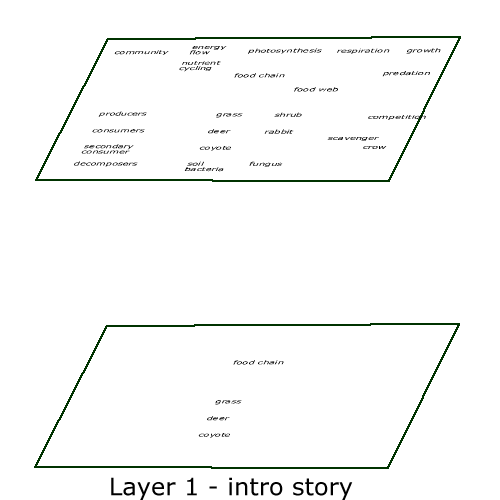<Context>
put it on a database
all the resources are filed somewhere
all the student learning objectives are listed and categorized
specific learning objectives
more general problem solving goals
each activity of a student is tracked
goal is to help me understand how the students move through the course
causal relationships between prerequisites and outcomes
http://web.pdx.edu/~rueterj/
bi335/learning_objectives/slo_lite.htm
http://web.pdx.edu/~rueterj/
bi335/learning_objectives/problem_solving.htm
What I thought I needed to know to go forward:
move all my learning objectives from a flat tables to a relational database (such as Access)
structure that database so that I would be able to see how students are doing, using queries
<Example>
Categorization of learning objectives in Biology 101
subject area (just what is in the book)
cognitive levels (Blooms Taxonomy)
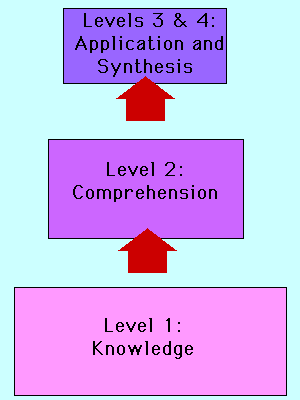
process and teaching strategies
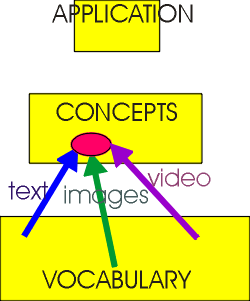
measurement of learning outcomes and assessment
<Develop the central concepts>
What I thought would work:
just make everything bigger and better
bigger list of specific learning objects
more links
better description of processes
Start by categorizing the course content and organizing
subject area
cognitive level
cognitive process, steps for learning
teaching strategies to support that learning
measurement of learning outcomes
NOPE! Not that simple.
subject area
subject content information is highly structured (categorize like LofC Subject Headings, or index)
*discipline version of this structure (as used by experts) is different (but related to) than that used to teach and learn
cognitive level
blooms
cognitive process, steps for learning
for one example, see table 1
teaching strategies to support that learning
we need to design courses that build from easier to more difficult cognitive processes
one of "strategies" is the order of presentation
measurement of learning outcomes
the learning outcomes I was looking for were more at the level of "understanding" and the ability to use information and ideas, and I wanted the students to act on what they know spontaneously
Table 1. Cognitive operations; an example list. From Nickerson ****, references Ehrenberg and Sydelle, 1980). For Data-gathering and retrieval strategies.
- Observing
- Recall and retrieval
- Noting differences
- Noting similarities
- Concept formation
- Classifying
- Concept differentiation
- Grouping
- Concept
<Extend these concepts>
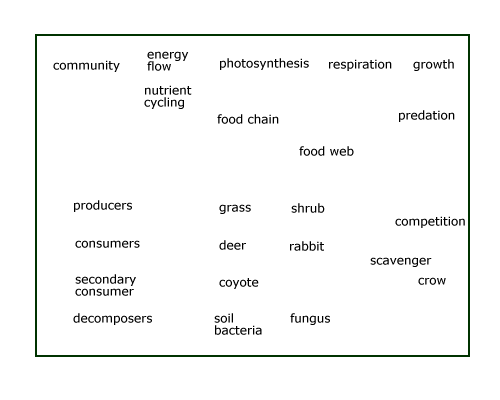
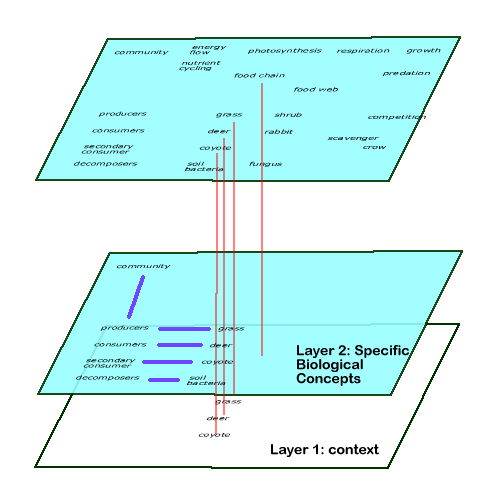
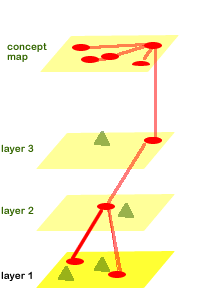
<Generalize>, <demonstrate the importance of this approach>
| Layer | Items | Cognitive processes | In Class Activities |
Out of Class Activities |
| 13. review | amplify concepts that will be carried into subsequent units | |||
| 12. | relate to values | evaluation, | in class discussion | |
| 11. | dynamic system where all processes are interrelated | Simulation | ||
| 10. | example of a community that has both predation and competition pressures simultaneously | description, diagram, reading | ||
| 9. | predicting the effects of predation and competition independently | analysis | assignment | |
| 8. extend | interactions within a trophic level | |||
| 7. find an exception | scavengers as not really in either trophic level in the simple schema | |||
| 6. extend the concept further | build from a food chain to a food web | |||
| 5. | describe the functions of predators and prey |
application by example, concept level |
read examples in the book | |
| 4. Build the concept, classification | bring in other examples for each category | |||
| 3. Vocabulary | define more precise biological terms of community, trophic level, primary producers, etc. | present, refer to the book | read the book | |
| 2. Recall | relate to a simple schema (see Figure 3) | graph | ||
| 1. Set context | start with a story about something they already know | recall | present in class |
Some of these activities could be supported by a central learning object
example: simulation of predator-prey interaction
used in class as a demo
used in lab - hands on
used in a discussion of resource management
each use had a different assessment "wrapper"
<Summarize>
The goal should be to change how students interact with information. They need to be cognitive and active.
We can do this by creating layers of support for learning that connect the discipline oriented information to the level of the student.

